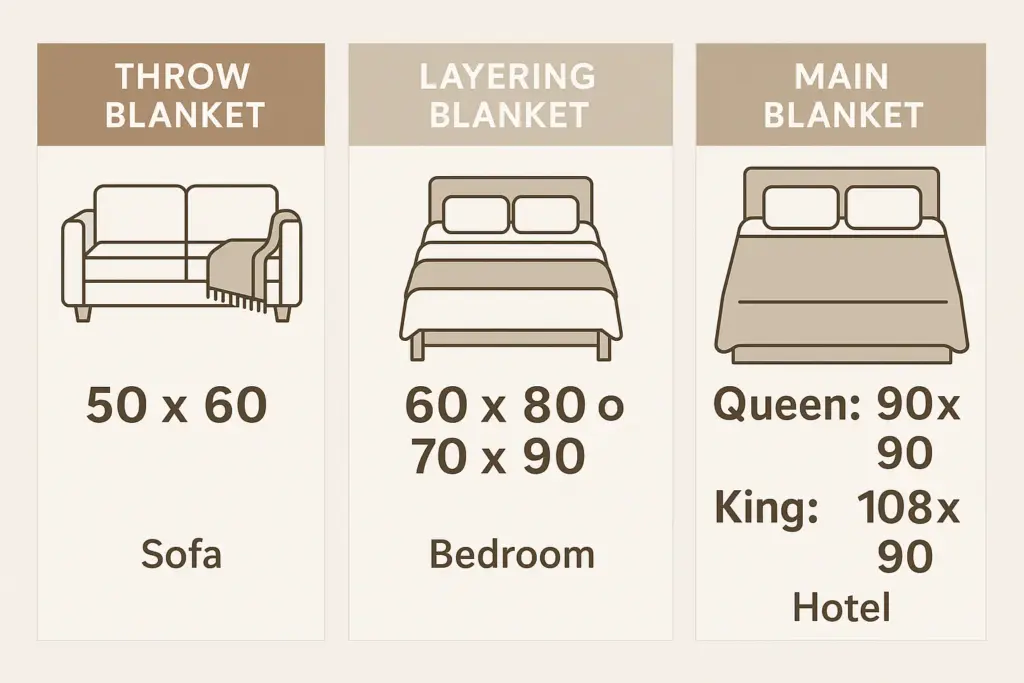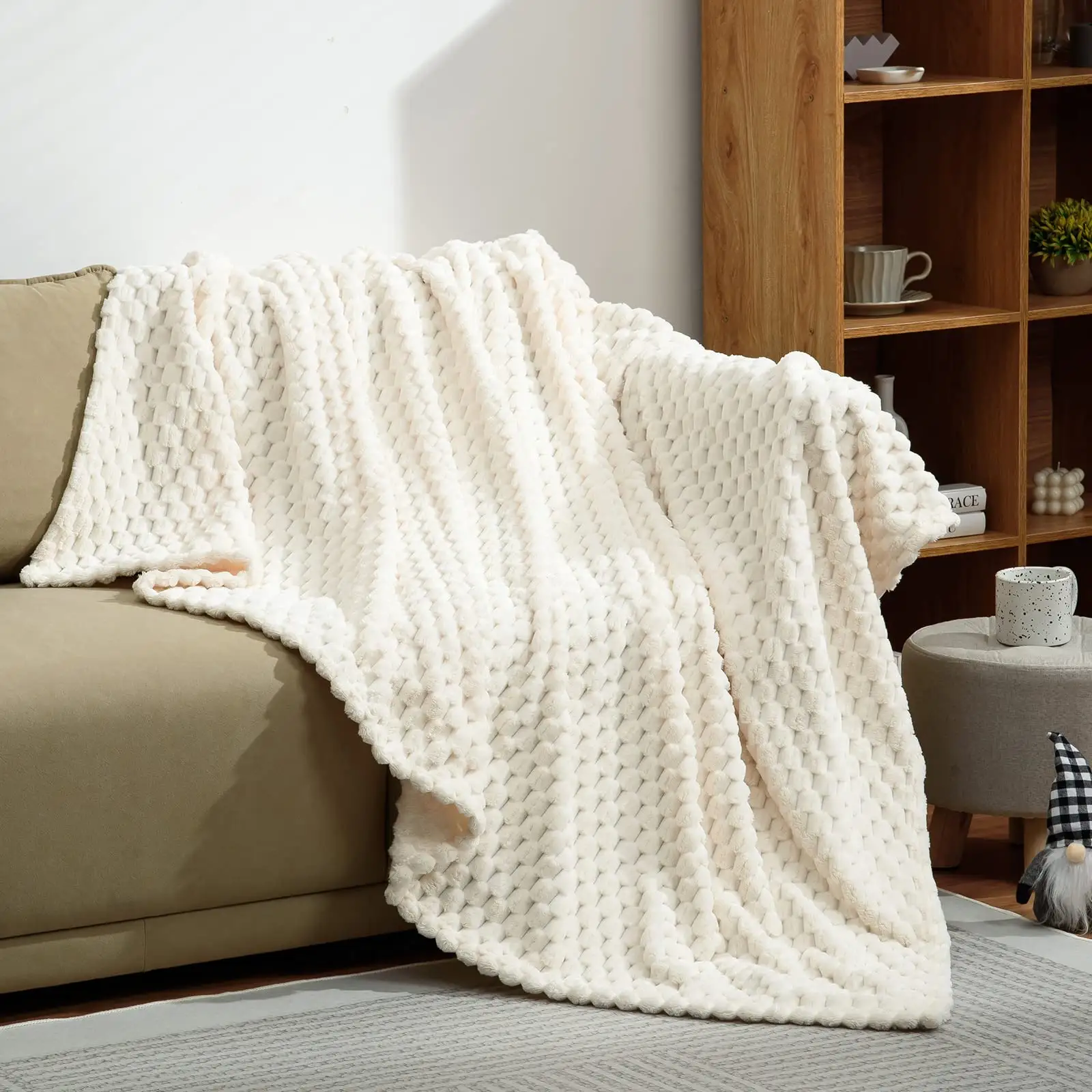Blankets are more than just layers of warmth—they’re functional essentials that define sleeping comfort, bed presentation, and even room aesthetics. For businesses in the bedding industry, offering the right range of blanket sizes is critical to satisfying diverse market segments, from domestic consumers to global hospitality clients.
This guide provides a clear overview of standard blanket sizes, regional variations, and professional recommendations for selecting the right size per use case.
1. Standard Blanket Sizes (US Market)
| Blanket Size | Dimensions (inches) | Common Use |
|---|---|---|
| Twin | 66 x 90 | Kids, single beds, dorms |
| Full/Double | 80 x 90 | Teen or guest beds |
| Queen | 90 x 90–100 | Most common for master bedrooms |
| King | 108 x 90–100 | Large beds, luxury homes |
| California King | 108 x 98–102 | Extra-long king beds |
Note: Actual product dimensions may vary slightly by manufacturer; always confirm with your supplier or technical spec sheet.
2. International Blanket Sizes
UK & Europe
| UK Size | Dimensions (cm) | Equivalent Mattress |
|---|---|---|
| Single | 135 x 200 | 90 x 190 cm |
| Double | 200 x 200 | 135 x 190 cm |
| King | 225 x 220 | 150 x 200 cm |
| Super King | 260 x 220 | 180 x 200 cm |
Australia
| AU Size | Dimensions (cm) | Equivalent Mattress |
|---|---|---|
| Single | 140 x 210 | 92 x 188 cm |
| Double | 180 x 210 | 138 x 188 cm |
| Queen | 210 x 210 | 153 x 203 cm |
| King | 240 x 210 | 183 x 203 cm |
Tip: If you serve international customers, label your blanket sizes clearly with region-specific size names and metric dimensions.

3. How to Choose the Right Blanket Size
When selecting or sourcing blankets for a specific market, consider the following factors:
A. Bed Size Compatibility
Choose a blanket that provides enough overhang on both sides for full coverage and visual appeal—especially important in hospitality.
- Twin beds: Minimum 10–12 inches overhang
- Queen beds: Aim for 12–20 inches
- King beds: At least 18 inches for drape effect
B. Purpose of Use
- Layering blanket: Slightly smaller size preferred (no need to drape)
- Primary warmth: Choose larger size for full coverage
- Throw blanket: Typically 50 x 60 in (127 x 152 cm); size is flexible depending on aesthetic and function
C. Seasonal Considerations
Lighter summer blankets may be smaller to reduce fabric bulk. Winter blankets often require more coverage for tucking in.
D. Shrinkage Allowance
Natural fibers like cotton may shrink after the first wash. B2B buyers should request prewashed or preshrunk versions or confirm the shrinkage percentage during sourcing.
4. Custom Blanket Sizing for Wholesale Orders
For private label or contract manufacturing clients, custom blanket sizing is available. Factors to discuss with your supplier include:
- Target market (domestic or export)
- Bed dimensions & bedding style (tucked or untucked)
- Regional climate and usage behavior
- Packaging limitations (compressed vacuum pack vs full-fold display)

Conclusion
Offering the right blanket size is not just a matter of dimensions—it’s about fit, function, and end-user satisfaction. Whether you are a retailer, distributor, or hospitality brand, understanding regional standards and customer preferences will help you build a more adaptable and appealing product line. Work closely with your manufacturer to define precise specifications and avoid sizing mismatches that lead to returns or customer dissatisfaction.


Leave a Reply